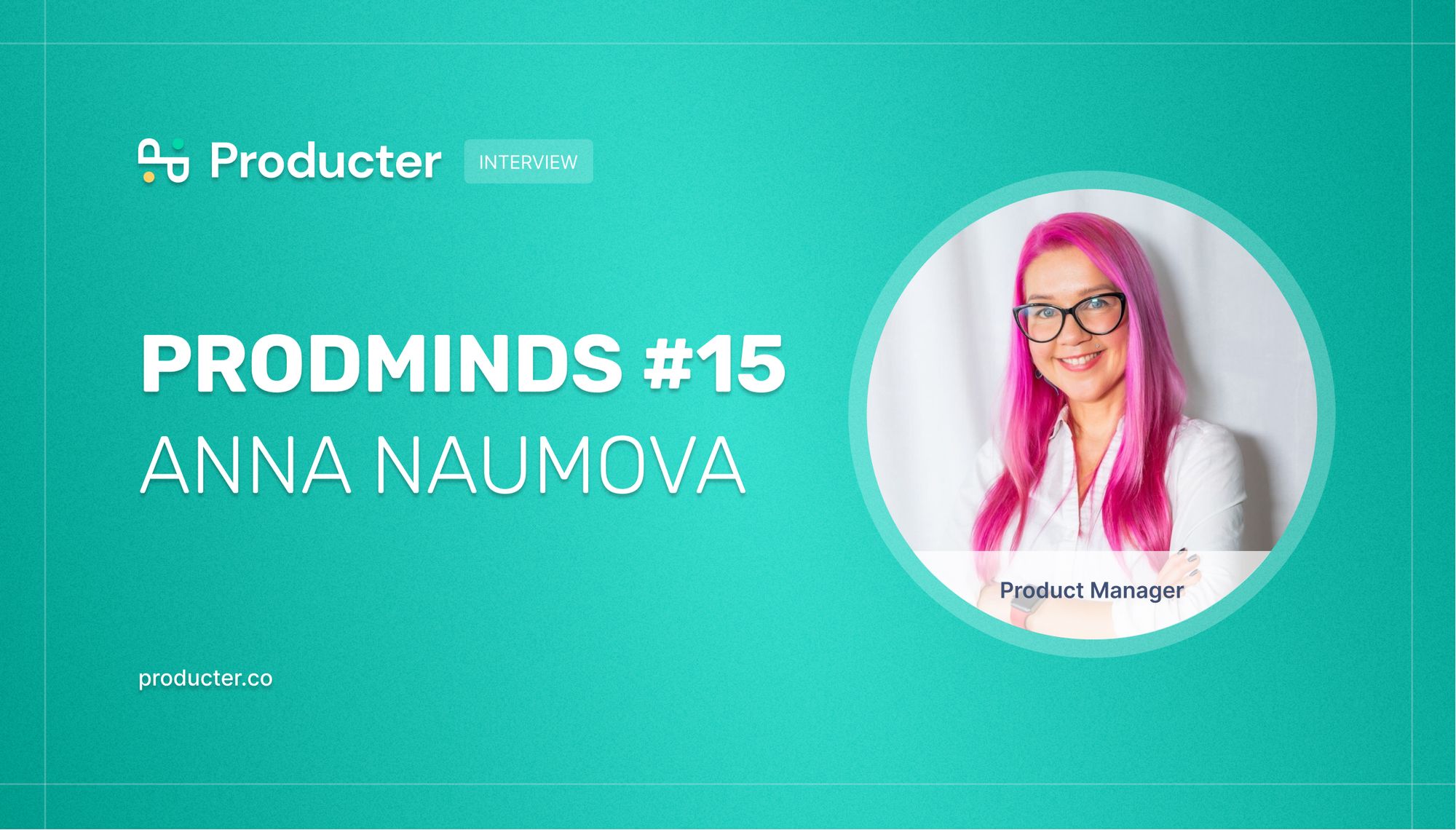Team Producter: Would you tell us a bit about you and your career path in product management?
Luis: I began my career in 2007, working as a Product Manager for a small start-up called Vulkanostudio. Over the years, I gained experience and took on more responsibilities, ultimately becoming the Senior Product Manager in charge of three other Product Managers in 2012.
However, in 2019, I decided to take a different path and became a Product Manager coach and Agile Coach. I enjoyed helping others develop their skills and navigate the ever-changing landscape of product management.
In August 2022, I decided to return to the role of Product Manager, this time for Retail Insight. I missed the hands-on work and the satisfaction of seeing a product come to life.
Throughout my career, I've learned that product management is not just about creating a product; it's about understanding the customer and creating a solution that meets their needs. It's also about adapting and pivoting when things don't go as planned.
Team Producter: Which part of being a product manager is the most challenging for you?
Luis: I can tell you that some common challenges that product managers may face include the following:
- Prioritizing and balancing competing priorities. Product managers often have to juggle multiple projects and stakeholders, and it can be difficult to decide which tasks and initiatives to prioritize.
- Communicating and collaborating effectively with cross-functional teams. Product managers need to be able to work closely with designers, engineers, and other stakeholders to ensure that their product is developed and delivered successfully.
- Gathering and analyzing data to inform decision-making. Product managers need to be able to gather and analyze data to understand the needs of their customers and make informed decisions about their products.
- Managing and communicating product vision and strategy. Product managers are responsible for defining the overall direction and strategy for their product, and they need to be able to communicate this vision effectively to their team and other stakeholders.
Team Producter: How do you leverage data while doing prioritization?
Luis: As a product manager, I leverage qualitative and quantitative data to prioritize decisions. This can help to ensure that the most valuable features and improvements are being worked on and resources are being used efficiently.
There are a few different ways that a product manager can use data in this context:
- Use customer feedback and data on customer behaviour to understand what features and improvements are most important to users. This can help to prioritize the development of features that will have the greatest impact on customer satisfaction and loyalty.
- Use data on the performance of different features to understand which ones are having the greatest impact on the business. This can help to prioritize the development of features that are driving the most value for the company.
- Use data on the cost and effort required to develop different features to understand which ones are the most feasible to work on. This can help to prioritize the development of features that will deliver the most value for the investment of time and resources.
- Use data on the potential impact of different features to understand which ones have the greatest potential to drive growth and success for the product. This can help to prioritize the development of features that have the potential to move the needle for the business.
Team Producter: What efforts do you take to help new product managers immediately understand the company culture?
Luis: As a product manager, you can help new product managers understand the company culture by:
- Providing a clear overview of the company's values, mission, and goals: This will give new product managers a sense of what the company stands for and how it operates.
- Introducing them to key stakeholders: Introducing new product managers to key stakeholders, such as executives, team leads, and other key players in the company, can help them understand the company's culture and how decisions are made.
- Helping them understand the company's decision-making process: Giving new product managers insight into how decisions are made at the company, such as the roles and responsibilities of different teams and individuals, can help them understand the company's culture and how to navigate it.
- Sharing examples of successful projects: Sharing examples of successful projects and initiatives that embody the company's values and culture can help new product managers understand what it means to work at the company and what is expected of them.
- Encouraging them to ask questions and seek feedback: Encourage new product managers to ask questions and seek feedback from their peers and managers. This will help them understand the company culture and how to work within it effectively.
Team Producter: What are the key points to listen to the customers and make use of the insight coming from them?
Luis: As a product manager, it is important to listen to your customers and gather insights from them in order to improve your product and meet their needs. Here are some key points to consider when listening to your customers and using their insights:
- Make sure to actively listen to what your customers are saying. This means paying attention to their words and body language and asking clarifying questions to better understand their perspective.
2. Look for patterns and trends in customer feedback. This can help you identify common issues or areas of improvement for your product.
3. Keep an open mind and be willing to consider new ideas and perspectives. Your customers may have insights or ideas that you haven't thought of before.
4. Use customer feedback to inform product development and strategy. Consider how customer insights can be incorporated into your product roadmap and marketing efforts.
5. Follow up with customers to show that you value their input and to gather more detailed feedback. This can help you build strong relationships with your customers and gather more in-depth insights.
In conclusion, my career in product management has been a journey of growth and learning. I have come to understand that product management is not just about creating a product, but about understanding the customer and creating a solution that meets their needs. Overall, I am excited to continue my journey in product management and see what the future holds.
Do not forget to visit my blog for more tips on Product Management
Producter is a product management tool designed to become customer-driven.
It helps you collect feedback, manage tasks, sharing product updates, creating product docs, and tracking roadmap.

You may also like:








